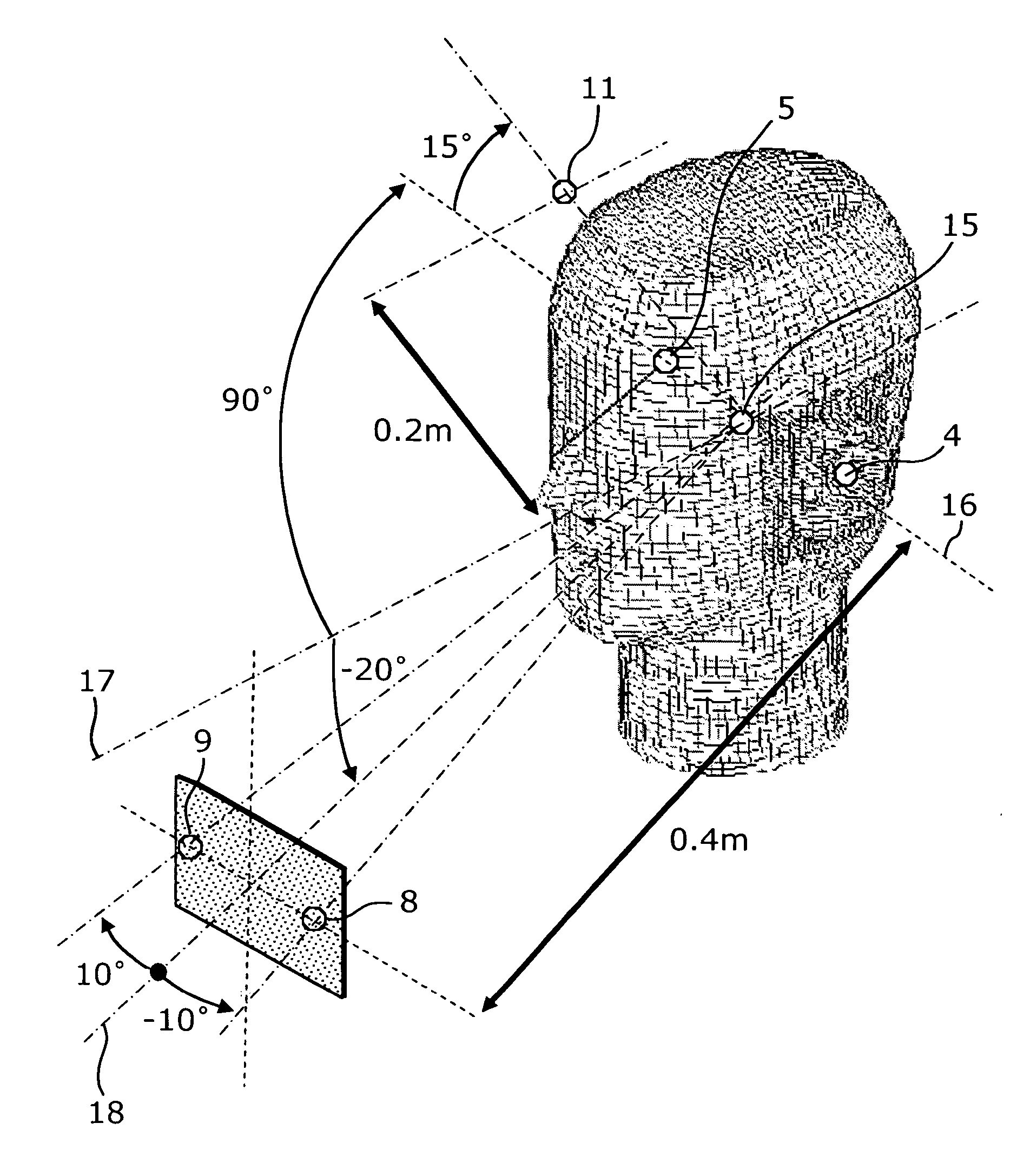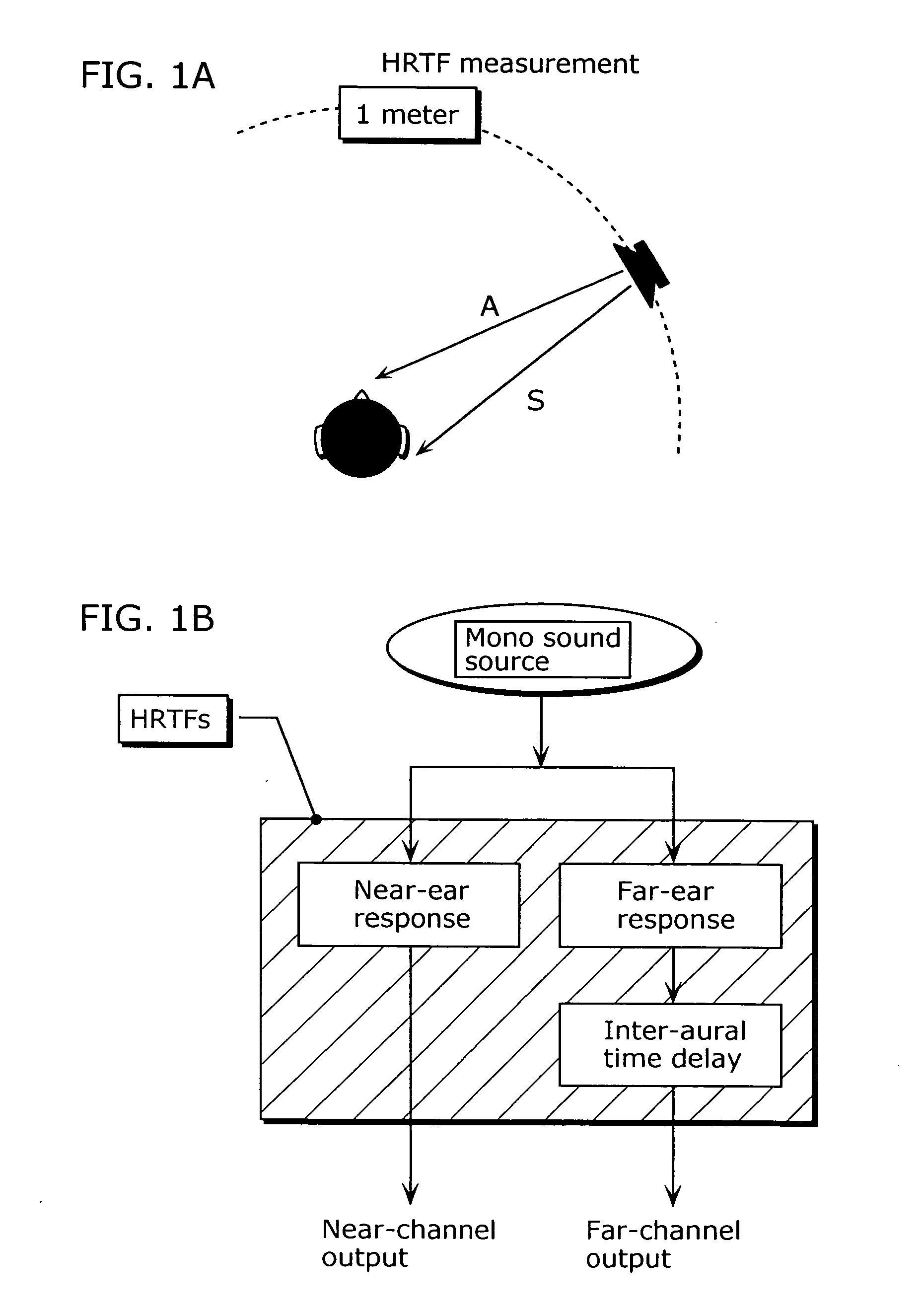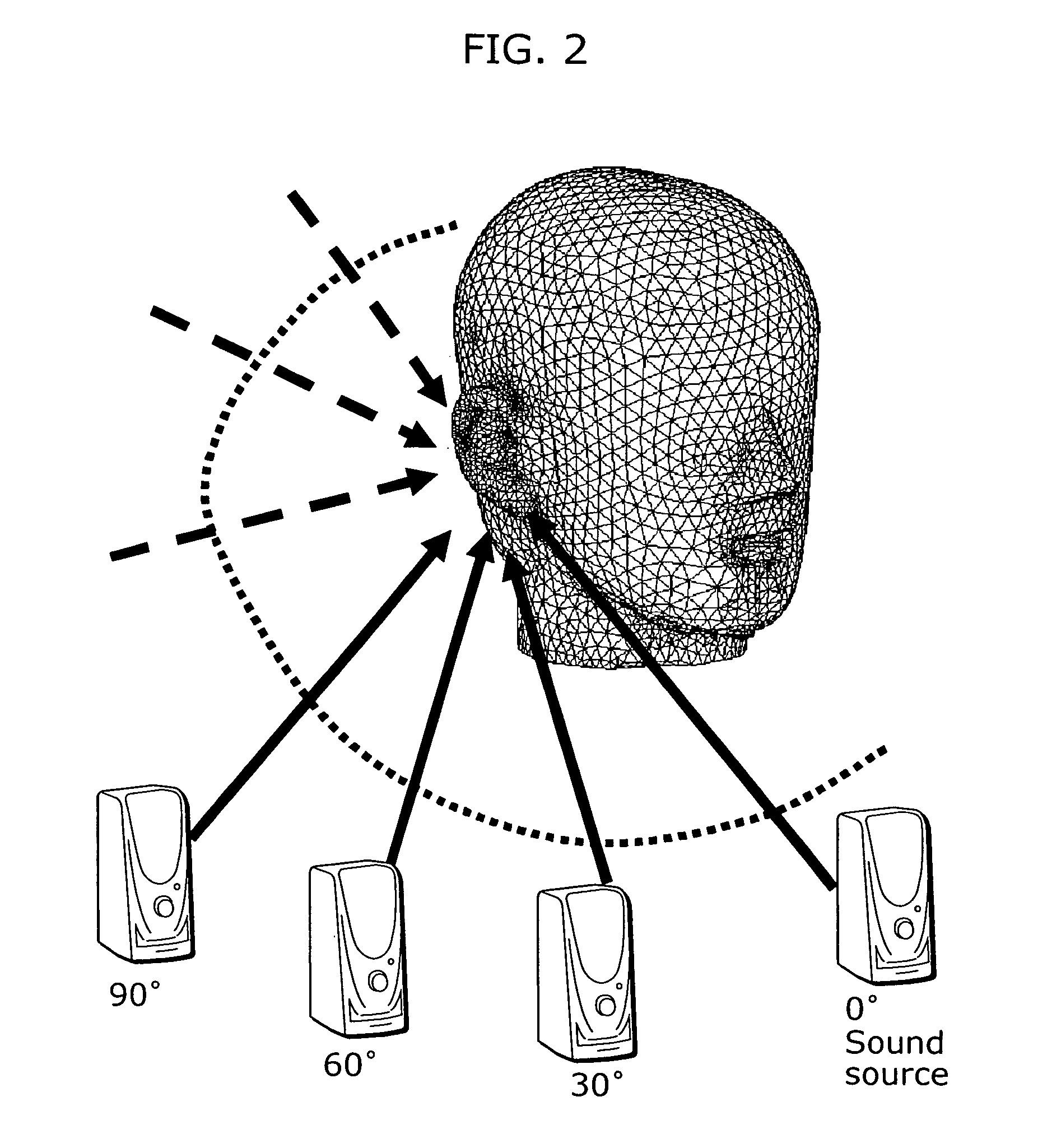Audio image control device and design tool and audio image control device
a control device and audio image technology, applied in the direction of stereophonic communication headphones, stereo-stereo systems, stereophonic arrangments, etc., can solve the problems of difficult stabilization of measurement conditions, difficult control of sound images correctly, and measurement of an enormous number of transfer functions, so as to achieve precise localization of sound images, accurate obtain enormous kinds of transfer functions, and high speed
- Summary
- Abstract
- Description
- Claims
- Application Information
AI Technical Summary
Benefits of technology
Problems solved by technology
Method used
Image
Examples
first embodiment
[0057] A sound image control device according to the first embodiment of the present invention obtains precise localization of sound images by determining transfer functions by use of a three-dimensional head model that has a human body shape and is represented on a calculator, according to a calculation model in which the positions of sound sources and sound receiving points are reversed, by means of numerical calculations employing the boundary element method, and then by controlling sound images using such transfer functions.
[0058] Details about the boundary element method are introduced, for example, in “Masataka TANAKA, et. al, “kyoukai youso hou (Boundary Element Method)”, pp. 40-42 and pp. 111-128, 1991, Baifukan Inc.) (hereinafter referred to as “Non-patent document 1”).
[0059] Using this boundary element method, it is possible to perform such a calculation as is described in “Papers of 2001 Autumn Meeting of Acoustical Society of Japan (pp. 403-404)) (hereinafter referred ...
second embodiment
[0074] The second embodiment describes the case where the sound image control device of the first embodiment is applied to sound listening using a headphone so as to obtain precise localization of sound images also in the case of sound listening using a headphone.
[0075]FIG. 11 is a diagram showing a calculation model for calculating transfer functions from acoustic transducers of a sound image control device of the second embodiment to the entrances to the respective ear canals. In FIG. 11, the same constituent elements as those shown in FIG. 6 are assigned the same reference numbers, and descriptions thereof are not provided. FIG. 11 illustrates a calculation model corresponding to the one for a so-called headphone listening in which the acoustic transducer 8 and the acoustic transducer 9 are placed close to the respective ears of the head model 3. In other words, the sound emitting point 4 located at the left ear canal allows the sound pressure generated at the sound receiving po...
third embodiment
[0079] The first and second embodiments describe the case where sound emitting points are placed at the entrances to the respective ear canals, but the third embodiment describes the case where more precise localization of sound images is achieved by placing sound emitting points at the respective eardrums so as to determine transfer functions to a target sound source.
[0080]FIG. 13 is a diagram showing a more detailed 3-D shape of the right pinna region of the head model 3. FIG. 13A is a front view showing the right pinna region of the head model 3, and FIG. 13B is a top view showing the right pinna region of the head model 3. As shown in these drawings, an eardrum 23 is formed on the ear canal 21 starting from the ear canal entrance 1. The third embodiment is the same as the first embodiment except that the ends of the respective ear canals of the head model 3 are closed by the eardrums.
[0081]FIG. 14 is a diagram showing an example calculation model for calculating transfer funct...
PUM
 Login to View More
Login to View More Abstract
Description
Claims
Application Information
 Login to View More
Login to View More - R&D
- Intellectual Property
- Life Sciences
- Materials
- Tech Scout
- Unparalleled Data Quality
- Higher Quality Content
- 60% Fewer Hallucinations
Browse by: Latest US Patents, China's latest patents, Technical Efficacy Thesaurus, Application Domain, Technology Topic, Popular Technical Reports.
© 2025 PatSnap. All rights reserved.Legal|Privacy policy|Modern Slavery Act Transparency Statement|Sitemap|About US| Contact US: help@patsnap.com



